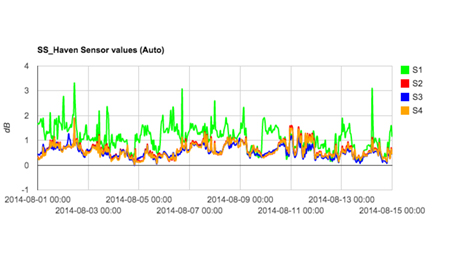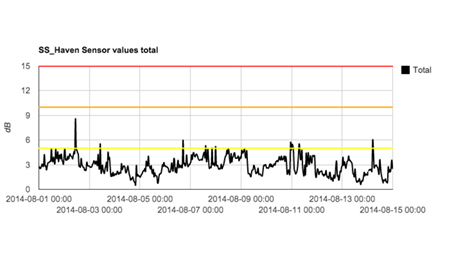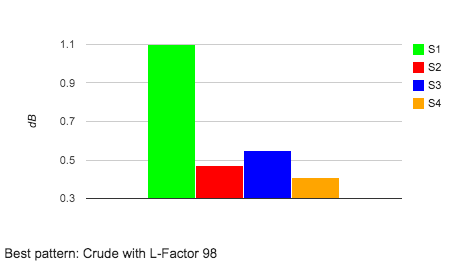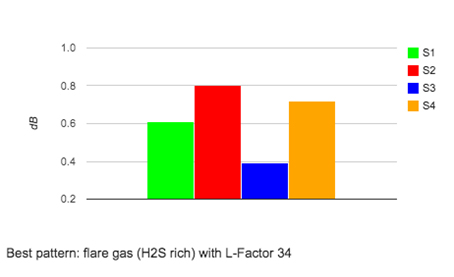CONSULTANCY
Besides fully operational qualitative air monitoring networks we provide the following additional services and support in data interpretation to unburden clients in solving gas emission related issues:
Expertise in data analysis
Although interpretation of eNose data is quite intuitive, our expert knowledge and our wide range of data analysis tools provide detailed information about the current and historical air composition situation.
Reporting of emission source tracing & emission dispersion tracking
We are capable of pin-pointing emission sources within the eNose network parameter and are able to provide a clear picture of how gas emission plumes can disperse over a certain area.
Odour assessments with mobile eNose
During odour assessments operators can take along the mobile eNose and use a special entry application on a smart phone to enter the perceived fragrance and intensity at site. This allows us to correlate the ‘human nose’ observations on the spot with the mobile eNose registrations.
Sampling & lab analysis/testing
The odour concentration of the samples is determined according to the European standard for dynamic olfactometry, EN-13275, in laboratory conditions. Besides the standardized measurements, the sensitivity curve and the odour threshold of the eNose for the different samples is determined. The training results in the creation of a set of reference fingerprints of relevant plant specific odours.
Training & consultancy
- eNose network basic practical operator training sessions
- eNose network advanced user training
CONSULTANCY
Besides fully operational qualitative air monitoring networks we provide the following additional services and support in data interpretation to unburden clients in solving gas emission related issues:
Expertise in data analysis
Although interpretation of eNose data is quite intuitive, our expert knowledge and our wide range of data analysis tools provide detailed information about the current and historical air composition situation.
Reporting of emission source tracing & emission dispersion tracking
We are capable of pin-pointing emission sources within the eNose network parameter and are able to provide a clear picture of how gas emission plumes can disperse over a certain area.


Odour assessments with mobile eNose
During odour assessments operators can take along the mobile eNose and use a special entry application on a smart phone to enter the perceived fragrance and intensity at site. This allows us to correlate the ‘human nose’ observations on the spot with the mobile eNose registrations.
Sampling & lab analysis/testing
The odour concentration of the samples is determined according to the European standard for dynamic olfactometry, EN-13275, in laboratory conditions. Besides the standardized measurements, the sensitivity curve and the odour threshold of the eNose for the different samples is determined. The training results in the creation of a set of reference fingerprints of relevant plant specific odours.


Training & consultancy
- eNose network basic practical operator training sessions
- eNose network advanced user training
CONSULTANCY
Besides fully operational qualitative air monitoring networks we provide the following additional services and support in data interpretation to unburden clients in solving gas emission related issues:
Expertise in data analysis
Although interpretation of eNose data is quite intuitive, our expert knowledge and our wide range of data analysis tools provide detailed information about the current and historical air composition situation.
Reporting of emission source tracing & emission dispersion tracking
We are capable of pin-pointing emission sources within the eNose network parameter and are able to provide a clear picture of how gas emission plumes can disperse over a certain area.

Odour assessments with mobile eNose
During odour assessments operators can take along the mobile eNose and use a special entry application on a smart phone to enter the perceived fragrance and intensity at site. This allows us to correlate the ‘human nose’ observations on the spot with the mobile eNose registrations.
Sampling & lab analysis/testing
The odour concentration of the samples is determined according to the European standard for dynamic olfactometry, EN-13275, in laboratory conditions. Besides the standardized measurements, the sensitivity curve and the odour threshold of the eNose for the different samples is determined. The training results in the creation of a set of reference fingerprints of relevant plant specific odours.

Training & consultancy
- eNose network basic practical operator training sessions
- eNose network advanced user training
